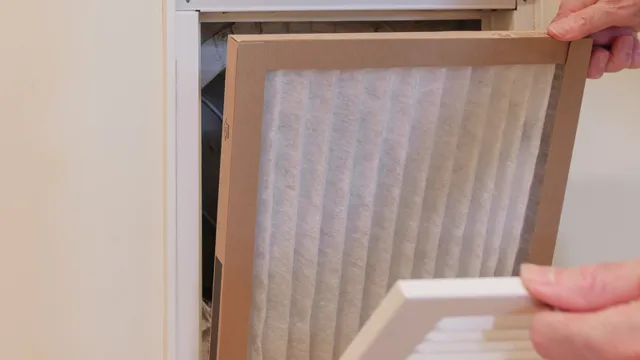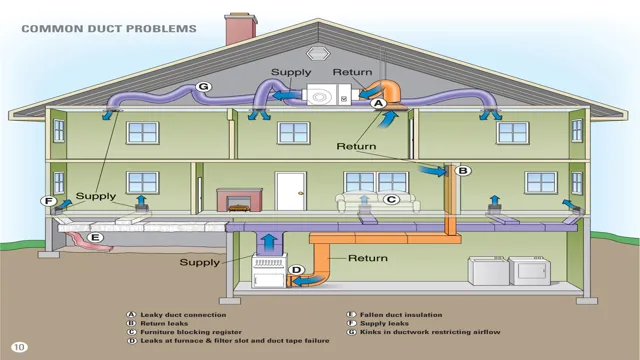Have you ever noticed some dampness or moisture around your air conditioning system? It could be because of the water accumulating inside your AC ducts. The accumulation of water in AC ducts is a common problem that most homeowners face, particularly when summer is around the corner. Water can clog your AC ducts, and if left untreated, it can lead to mold development, poor air quality, and even structurally damaging the house.
It’s always important to find ways to remove water from AC ducts in the early stages, to ensure your home is safe and comfortable. Keep reading to discover some tips on how to remove water from AC ducts effectively.
Locate the Water Source
If you’re wondering how to get water out of AC ducts, the first step is to locate the water source. Air conditioning systems work by removing heat and humidity from the air, so they often produce condensation as a byproduct. This condensation typically collects in a drip pan, which is designed to direct the water outside or to a drain.
However, if the drip pan becomes clogged or damaged, the water can begin to accumulate inside the ductwork. To locate the water source, you will need to inspect the unit for signs of water damage, such as discolored or sagging ceiling tiles or walls. You may also notice musty odors or visible water stains around the vents.
Once you have located the water source, you can take steps to remove the water and prevent future backup.
Check for a Clogged Condensate Drain
One of the most common causes of an AC unit not cooling properly is a clogged condensate drain. To locate the water source, you need to follow the drip line from your unit. This line should lead you to the drain, which is typically located near the outside unit.
Once you have located the drain, you can begin to check for any blockages. A clogged drain can cause water to back up into the unit, resulting in decreased cooling efficiency. If you do find a clog, it’s important to clear it as soon as possible to prevent any further damage to your system.
One effective way to clear a clog is by using a special vacuum or flushing the line with a solution of water and vinegar. By taking the time to check for a clogged condensate drain and clearing any blockages, you can help ensure that your AC unit is running at optimal efficiency.

Identify Any Leaks in the System
When you’re trying to identify any leaks in your plumbing system, the first step is to locate the water source. This may seem obvious, but it’s an important starting point for figuring out where the leak is and how to fix it. One way to locate the water source is to turn off all the faucets and appliances in your home, then take a reading of your water meter.
Wait a few hours, and then check the meter again. If the reading has gone up, you know that water is still flowing, so there’s a leak somewhere. Once you know where the water source is, you can start to examine the pipes and fixtures in that area for signs of leakage.
Look for water stains on walls or ceilings, or puddles of water on the floor. You may also be able to hear the sound of running water if there’s a leak in a nearby pipe. By taking the time to locate the water source, you’ll be able to pinpoint the leak and take steps to fix it before it gets worse.
Clean and Dry the Ducts
When water enters your ducts, it can cause significant damage to your HVAC system and may even pose health risks if left unaddressed. The first step in getting water out of your AC ducts is to shut off the power to your AC unit. Then, you’ll need to locate the source of the water and address any leaks or water damage.
Once you’ve dealt with the root cause, it’s time to clean and dry the ducts themselves. This is where a professional HVAC technician can come in handy, as they’ll have specialized equipment that can remove any moisture from your ducts and thoroughly clean them. By taking these steps, you can ensure that your HVAC system is functioning properly and that your indoor air quality remains healthy.
Remember, prevention is key – regular maintenance checks can help you avoid these types of issues in the first place.
Use a Wet-Dry Vacuum to Remove Water
When dealing with water damage in your home, it’s important to not only remove the excess water but to also clean and dry out your ducts. One effective tool to use for this task is a wet-dry vacuum. This versatile tool can handle both wet and dry material, making it ideal for extracting water from your ducts.
Before starting, make sure that your HVAC system is turned off and the power supply to it is cut off. Then, attach the hose to the vacuum and carefully maneuver it through the ducts. The powerful suction will extract any water or moisture present in the ducts, ensuring that they are thoroughly cleaned and dried.
This not only prevents mold growth but also improves your indoor air quality. Don’t let water damage affect your home’s HVAC system, use a wet-dry vacuum to clean and dry your ducts efficiently and effectively!
Wipe the Ducts Dry with a Cloth or Towel
When cleaning out your ducts, it’s essential to ensure they are completely dry before use. After thoroughly vacuuming the ducts, use a dry cloth or soft towel to wipe away any remaining debris. Make sure to get into all the creases and corners of the ducts, removing any residual dust and dirt.
Once you have wiped down all the surfaces, leave the ducts to air dry for a few hours. Moisture in the ducts can encourage the growth of mold and bacteria, which can have harmful effects on your health. Keeping your ducts dry is crucial to maintaining good air quality in your home.
So, ensure you take the time to dry your ducts thoroughly before use.
Run the AC to Help Remove Remaining Moisture
When it comes to removing remaining moisture in your home, running the AC is a top recommendation. Not only will it cool down your living space, but it will also help dehumidify the air. However, it’s important to clean and dry the ducts to ensure the AC is functioning at its best.
Over time, dust and debris can build up in the ducts, which can hinder the airflow and overall efficiency of your AC system. By cleaning and drying the ducts, you can reduce the chance of mold growth and improve the indoor air quality. Plus, it can also help prolong the lifespan of your AC system, saving you money on repairs and replacement in the long run.
So, don’t forget to schedule regular maintenance for your AC system and keep those ducts clean and dry!
Prevent Water Build-Up in the Future
If you want to prevent water build-up in your AC ducts in the future, there are a few steps you can take. First, make sure to change your air filter regularly to keep it from getting clogged with dust and debris. This will not only improve your air quality but also prevent the evaporator coil from freezing up, which can cause excess water to form in the ducts.
Additionally, consider having your HVAC system inspected and maintained on a regular basis by a professional. This can help identify any issues before they turn into major problems and ensure that your system is running as efficiently as possible. Finally, consider installing a dehumidifier in your home to reduce the overall moisture level.
This can help prevent water build-up in your AC ducts and improve your indoor air quality. By taking these steps, you can help ensure that your HVAC system is operating at its best and prevent water damage in the future.
Schedule Regular Maintenance Checks
Regular maintenance checks are essential to prevent water build-up and future damage to your property. By scheduling routine inspections, you can identify any leaks, clogs, or damage before they lead to costly repairs or even more severe issues. A professional plumber can help by examining your plumbing, drainage, and sewer systems to ensure they are functioning correctly.
They can also provide helpful tips on how to maintain your plumbing and keep it in good condition. Taking preventative steps like scheduling regular maintenance checks can save you time and money in the long run. Just like how going to the dentist for routine cleanings can prevent cavities and other dental issues, regular inspections can prevent water build-up and other plumbing problems.
So, make sure you schedule your maintenance check and take care of your plumbing to avoid costly repairs and unwanted water damage.
Install a Condensate Pump
Installing a condensate pump can prevent water build-up in the future. Condensate pumps are used to remove excess water that accumulates in air conditioning units, dehumidifiers, and other HVAC systems. Without a condensate pump, this excess water can cause damage to your unit and even lead to mold growth.
By installing a condensate pump, the excess water is safely and efficiently removed, preventing any potential damage or health hazards. It’s a small investment that can save you from costly repairs in the long run. So why not install a condensate pump today and ensure the safety and longevity of your HVAC system?
Conclusion: Keep Your AC Ducts Water-Free
In summary, getting water out of AC ducts may seem like a daunting task, but it’s a problem that can be solved with a little elbow grease and some clever thinking. Whether it’s by turning on the fan, using a wet/dry vacuum, or calling in a professional, there are many ways to ensure that your ducts stay dry and functional. So don’t let the thought of soggy air conditioning bring you down – with these tips, you’ll be keeping your home cool and comfortable in no time.
“
FAQs
Why is there water in my AC ducts?
Water in your AC ducts is usually caused by condensation. As the cool air from your AC system travels through the ducts, it can cause moisture to collect on the inside of the ducts.
How do I know if there’s water in my AC ducts?
Signs of water in your AC ducts include a musty odor coming from your vents and visible water stains on your ceiling and walls near the vents.
Can water in AC ducts cause health problems?
Yes, if water in your AC ducts is left untreated, it can lead to the growth of mold and bacteria which can cause respiratory problems and other health issues.
How do I get rid of water in my AC ducts?
To get rid of water in your AC ducts, you can call a professional HVAC technician to clean and inspect your system. They can also install a dehumidifier to prevent moisture buildup in the future.

